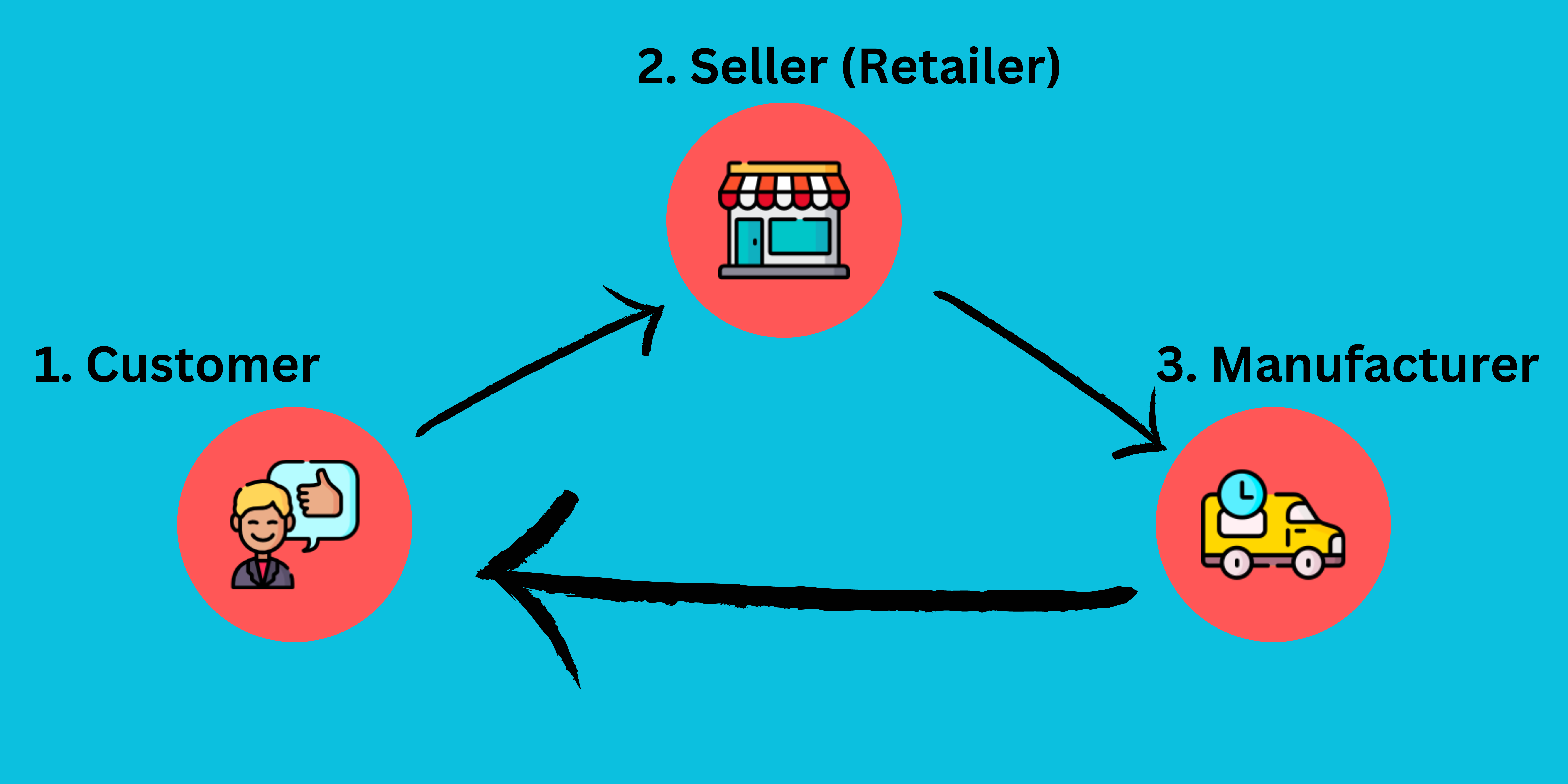By Jack Lovely, Business Analyst Intern at Enhanced Retail Solutions LLC
What is Drop Shipping?
Drop shipping is a term that describes a business model that was enabled by technology and virtual marketplaces. It became incredibly popular during the COIVD-19 pandemic. While everyone was at home for lockdowns, businesses moved their focus online to continue serving consumers. Large retailers expanded their online offerings and user experience. As more consumers used websites to place orders, there was a shift in the way many businesses managed inventory.
The typical supply chain model (indirect import) begins at production facilities (factories) around the world. Once a product is manufactured, the factory ships to the supplier’s distribution center. It is held there until sold to a retailer. Suppliers may ship directly to retail brick and mortar stores or the retailer’s distribution centers. Finally, it would move into the hands of the final consumer from the retailer’s distribution center or in-store pick up. However, this lowers profit margins as the cost of moving inventory around increases. Drop shipping changes this by cutting out the shipment to stores or retailer’s distribution centers. Product ships directly from the supplier’s distribution center to the end consumer.
How Does this Affect Retail?
Drop shipping introduces a different way of managing inventory and getting products to the final consumer. Popular retailers that have an established consumer base can offer the manufacturer’s products online without ever holding the inventory. They just have the cost of digital marketing. Orders that are placed on Target’s website may be redirected to the supplier’s distribution centers to handle the delivery of the product. After the customer pays, Target keeps a negotiated fee for facilitating the transaction. The rest is sent to the manufacturer who ships the product. This method reduces redundancy, increases profits, and allows the retailer to increase sales without investing in potential liabilities.
Risk Management
The key component to drop shipping is the ideas of ownership and risk. In the traditional model, a retailer is required to invest in the ownership of goods and therefore accumulate the risk of dead stock. Dead stock includes goods that a firm owns, but is unable to sell for a long period of time or at the full sell price. Drop shipping allows the retailer to forgo that risk while receiving cash for sales made through the web. The manufacturer maintains ownership of the inventory and therefore holds the risk (the cost of capital). However, they receive sales from the retailer’s in-person and online stores which increases the overall volume of units sold.
Amazon is a prime (yes that is a pun) example of a retailer that has taken advantage of the drop shipping model since its early conception. Amazon’s online marketplace is infamous around the world for its great rates, fast shipping, reliable reviews, and detailed analytics on where products fit into the market. Manufacturers of all sizes can list their products on Amazon in order to reach a large market of online consumers. This allows Amazon to collect on sales where it has no direct investment or risk. It can capitalize on its existing infrastructure and reputation, without incurring the risk of holding dead inventory. It is an incredible symbiotic relationship between suppliers and retailers.
Drop Shipping on Tiktok
Tiktok has quickly become one of the world’s leading social media sites in the past decade. It presents shortform video content to users based on algorithms designed to track their preferences. Drop shipping became incredibly popular on the platform as a way for people of any age to “get rich fast”. Creators would provide examples of virtual synergies that seemed to allow the user to work on the initial setup, and then relax with their new passive income streams. However, the videos leave out several key details that were important to the drop shipping model.
Several of these “synergies” required designs created by the user and significant amounts of research into what products would be profitable, in demand, and underserved. Additionally, the investment of time and knowledge on how to successfully market the product in a profitable manner. The trend ignored any initial costs or fees associated with the necessary business accounts and portrayed the infrastructure in a deceptive manner. In other words, despite having a foundation in real business models, the Tiktok drop shipping trend was not the “passive income stream” it promised to viewers.
Conclusion
Drop shipping is a unique business model that increases the efficiency of traditional supply chains for the benefit of retail and manufacturing firms. It changes the dynamics of ownership risk and increases the need for smart inventory management. This calls for the use of technology to create live models of large sets of data, and accurate predictive modeling programs to ensure firms can maximize their profits. (To learn more about inventory management in drop shipping click here) Finally, despite apparent trends on popular social media platforms, drop shipping is not a passive income stream that only requires a few hours of setup. It is a rising business model that has the potential to create significant value for worldwide consumers and the firms that take advantage of it.


Comments are closed